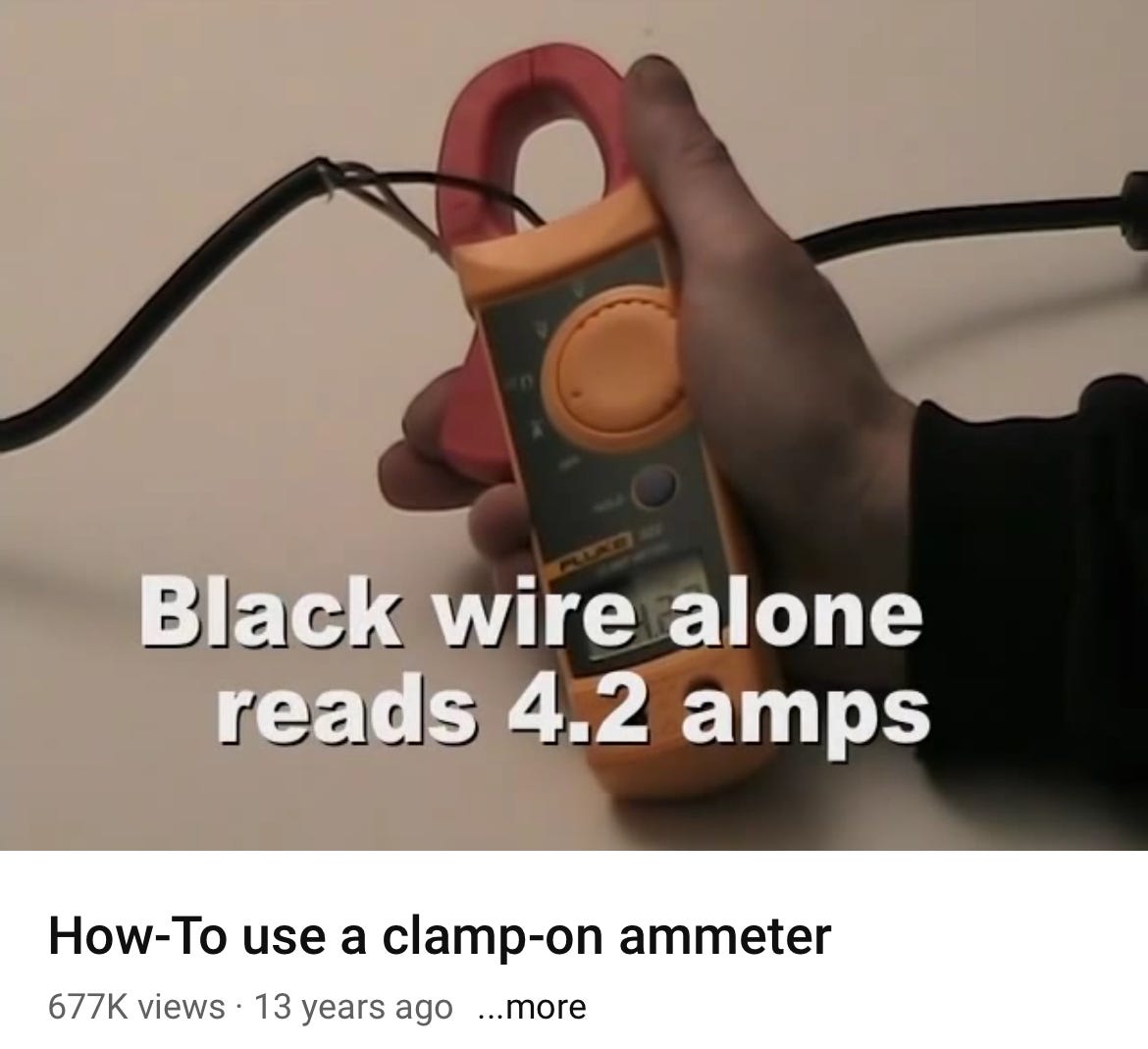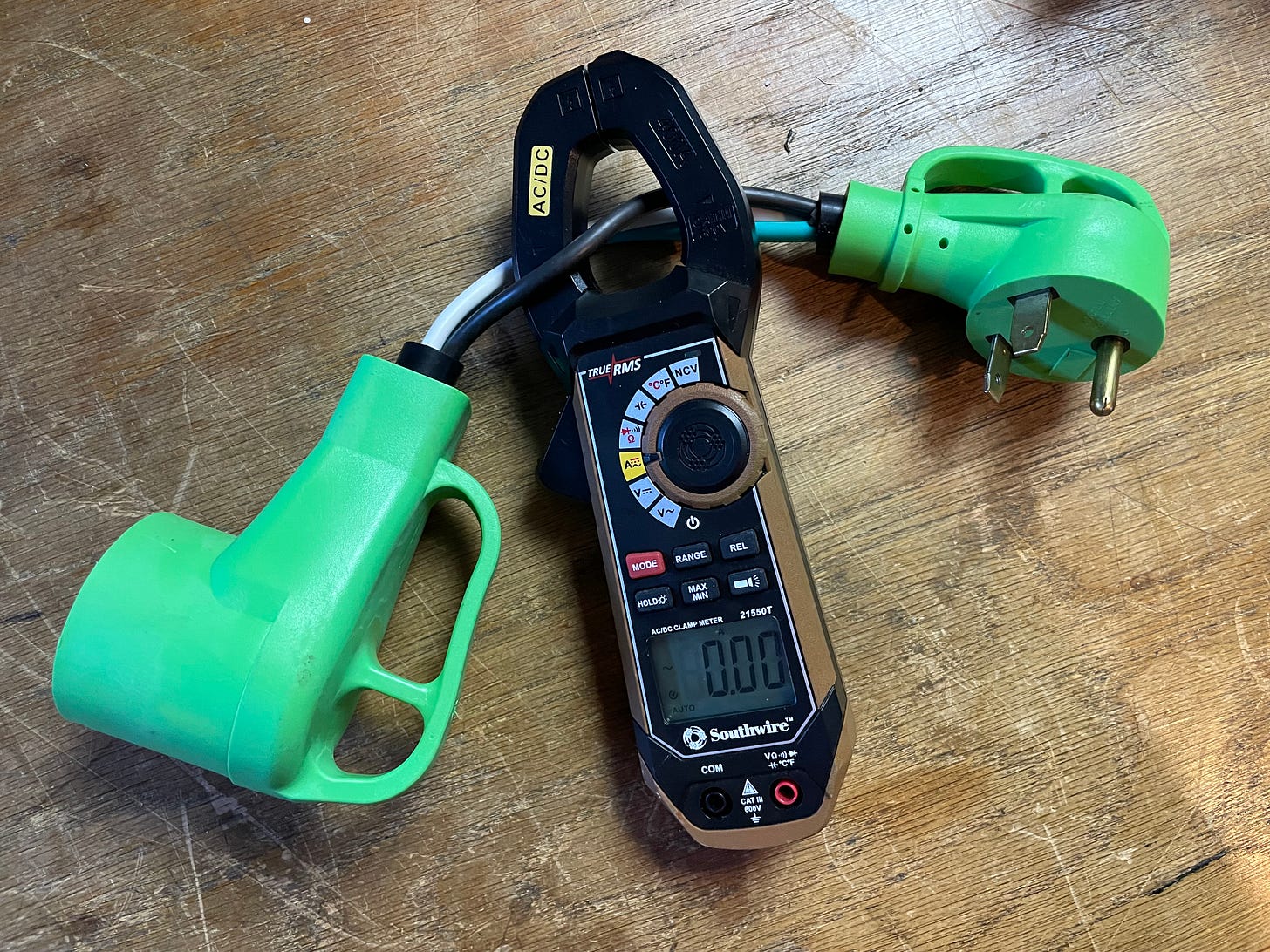Troubleshooting Theory: Measure it!
To fix an intermittent problem, you first need to learn how to break it on cue...
Hey Mike,
I have a question but, but as I said at the Rally, it’s a little long. What would cause a pair of 2kW generators to overload when charging my batteries? Looking for your guidance in what actions I need to do to either the generators or the trailer to allow me to charge my batteries with the generators.
Problem: I tried to charge my batteries with a pair of 2kW Champions with a 30-amp parallel operations kit. Generators would run for a few minutes then something would kick in and the generators would over rev, meaning the trailer would pull too many amps from the generators and charging would shut down. This has happened a few times.
History (background):
1. I have my 5th wheel set up for 50 amps. My 5th also has solar on the roof and 8 lithium batteries. It has a switch that will automatically switch from shore power to solar, based on being plugged in or not. Except for overhead lights, water pump and maybe something else that constantly runs off batteries.
2. I have two 2k Champions (with inverters) with a parallel operations kit. Knowing I can only get around 3700 Watts. And knowing I can run only 1A/C (but this not part of the question).
Thanks in advance for whatever advice you can offer. –Robert
Hey Robert,
Good to see you in Elkhart, and sorry I couldn’t answer your question directly at the campground. But when dinner calls and others are waiting, you gotta go. So here are a few suggestions about how to troubleshoot your problem.
The key to complex troubleshooting is monitoring and creating repeatability of the fault. That is, if you can find something that will trigger the fault on a regular basis, then you’re halfway there. But it’s just as important to have a way to monitor what’s actually going on in the system.
Clamp it…
While the final outcome is your generators shutting down, that’s really not enough information to guess at a possible cause of failure. I would suggest you get an AC/DC clamp ammeter like the Southwire 21050T above and set it to monitor peak AC amperage between your generators and the shore power inlet on your RV.
How to use a clamp ammeter
Realize that you just can’t clamp the jaws of an ammeter around the entire shore power cord. That’s because there’s current going in opposite directions (hot wire current going out, and neutral wire current returning) and they cancel each other. So you need to split the hot and neutral wire out of the extension cord and clamp the meter jaws only around the hot/black wire.
Here’s a video I made a while ago showing how this works. And below is a pic of a 30-to-50-amp dogbone adapter I modified for making basic RV current measurements. I carefully cut off the outer rubberized jacket exposing the individual conductors. This is only for testing, so don’t leave a modified adapter connected while you’re camping.
Note: Measuring 50-amp 120/240-Volt Split-Phase current is just a little more complicated. More on that later…
Testing Time
Now you can monitor the peak load current coming from your generators while you try to make them trip out. So get someone else to turn every light on and off. Gently tap on the case of the inverter, transfer switch, converter, and anything else connected to incoming AC power. You might notice when you flex the cover of the transfer switch that there’s a little “bump” in the current being drawn from your generators. If so, it could be something as simple as a loose wire or screw making contact with the chassis, or maybe a pinched wire, etc. After that it’s an easy fix.
In any event, all troubleshooting relies on the basic steps of being able to cause the fault to occur at will, and having a monitoring system that measures what’s going on. And sometimes the best monitoring is simply your own eyes and ears. Training yourself to be observant of EVERYTHING while you’re trying to make the system fail is very useful. I often just keep visually scanning for anything out of the ordinary that happens just before the failure occurs. And that’s usually all the hint I need to focus in on the offending piece of gear.
Good luck, and please let me know what you discover….
FYI: I just found out that another name for troubleshooting is dépanneuring. So now I have to use it in conversation three times today. Dépanneuring, dépanneuring, dépanneuring….
Email me at mike (at) noshockzone.org with your questions.
Let’s play safe out there… Mike








So yesterday in a campground store, I found a 50A to 50A dogbone. Not sure what it's design purpose was, but I snagged it and took off the outer cover so I have something I can use to measure power usage in my shoreline cable with my clamp meter. Thank you Mike, for your great ideas!
I find, when it comes to electricity: “One Test is Worth a Thousand Opinions.”